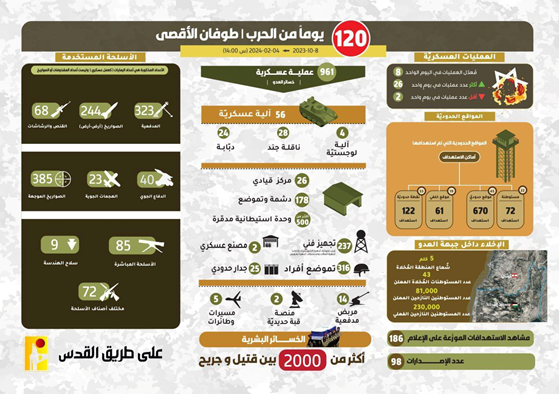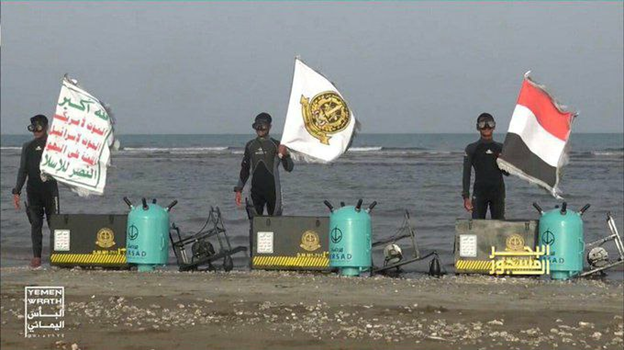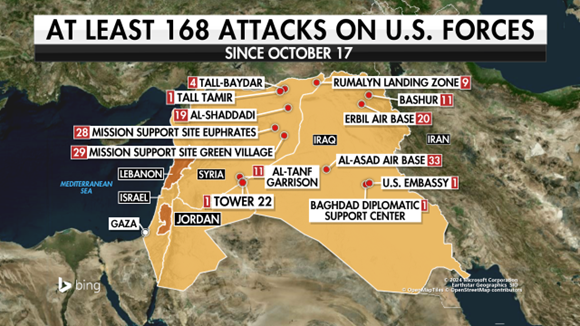How did the “unification of fields” strategy harm Tel Aviv?

| After the "Al-Aqsa storm" operation, it was the "unification of the fields" strategy that dealt a major blow to the interests of America and the Zionist regime in the region. |
Mehr News, International Group: 15th Mehrmah 1401 (7th October 2023) military units of the Islamic Movement of Hamas known as Izz al-Din al-Qassam, in a surprising and lightning-fast operation, they entered the depth of 24 kilometers around Gaza and experienced the recapture of the occupied territories for several days. During the Al-Aqsa storm operation, more than 1,300 Zionists were killed and nearly 250 people were captured. After a severe blow to the military-security structures of the Zionist regime, Netanyahu announced the formation of a national emergency cabinet with the presence of Benny Gantz and Yoav Gallant to plan the start of an all-out attack on the Gaza Strip and the destruction of Hamas. At the same time, Washington and the European Troika, while condemning the attack by Hamas, sent warships, combat-intelligence planes and sent military aid to Tel Aviv and NATO bases in the eastern Mediterranean.
In reaction to the mobilization of the reserve and main forces of the Israeli army to launch a major attack on the Gaza Strip, the groups affiliated with the “Resistance Axis” network decided to use the strategy of “Unity” fields” and according to the internal conditions of each member of the resistance, start operations against the interests of Israel and its allies in the region. The creation of this deterrent ring was divided into three layers: “Occupied Palestine”, “North-South Front” and finally the area of ”Arab East”. The aim of this policy is to intensify the military, political and economic pressure on Tel Aviv with the aim of ending the war and announcing a ceasefire in Gaza. In the continuation of this report, we will try to have a look at the opposition of the axis of resistance with Israel and its western allies in the Middle East region.
Humiliation on the Northern Front
Just one hour after the Al-Aqsa storm operation, Hezbollah of Lebanon, together with the branches of Hamas and Islamic Jihad in southern Lebanon, attempted to target spy stations, barracks and Israeli military forces in Kurdish northern front. A series of limited but targeted attacks by Hezbollah caused the Israeli army to send a third of its military talents in various units to the common border with Lebanon after a short period of time. After a short period of time, the parties to the conflict tried to reach a balance point by choosing military points in the border areas; But the progress of the Israeli army in Gaza caused an increase in the exchange of fire at the border points. This issue displaced between 80,000 (Hebrew sources) and 200,000 settlers (Lebanese sources) within a radius of 1.25 miles and caused serious damage to Israel’s economy. The intensification of the security-economic burden of Hezbollah’s actions in the north of occupied Palestine caused the actions of the Israeli army to become more aggressive in the south of Lebanon. For example, in January 2024, the Israeli army’s assassination squad attempted to assassinate Saleh al-Aroori, the deputy head of Hamas’s political office in Beirut, assassinate Wissam al-Tawil, the deputy commander of one of the units of the Rezwan Rangers, and Abbas al-Dabs, the head of Hezbollah’s operations in Nabatieh province.
From the 8th of October to the 19th of February, Hezbollah has sacrificed more than 200 martyrs in the defense of Jerusalem and Lebanon’s national security. On February 5th, under the pretext of passing the 120th day of the Al-Aqsa storm operation, Hezbollah published statistics regarding the latest actions of this movement against the Israeli army. According to the Hezbollah media unit, during the mentioned period, more than 2,000 Zionists were killed and wounded, 26 command centers were attacked, 43 settlements were evacuated and 230,000 people were displaced. As the war entered its fifth month, it seems that the red lines between Hezbollah and the Zionist regime have changed. By violating the red lines of the fight against the resistance, the Israeli army has targeted civilian points in areas such as Nabatieh (one of the Shiite bases) and Saida (the Sunni center of Lebanon). In response to this attack, Hezbollah targeted the Miron airbase and the city of Safad. Now, some analysts believe that although Hezbollah is still not interested in expanding the scope of the war with Tel Aviv, Netanyahu and his right-wing allies may seek to open a new front in the north of occupied Palestine in order to escape the fall.
Insecure Red Sea for Israel
At the same time as the targeted attacks of the Lebanese resistance against military targets in the north of the occupied Palestine, the Yemeni National Army also issued a statement and announced that based on its religious, Arab and humanitarian mission in the south occupied territories; It will especially target the port of Eilat. The series of attacks by the Yemeni resistance on the port city almost stopped the normal business activity in Eilat. With the start of the Israeli army’s ground attack on Gaza and the complete blockade of this strip, the Yemeni national army started anti-Zionist operations against the ships affiliated with the Zionist regime from November 19, 2023. According to Bloomberg, Sanaa’s actions against Israel put 12% of world trade in the northern Indian Ocean at risk. The total of these attacks caused major shipping companies such as Mediterranean, CMACGM Group, Maersk, Hapag-Lloyd and British Petroleum Company ships to announce by publishing various statements that instead of passing through the traditional route of Suez- Bab al-Mandeb (24 days) will take a further route, i.e. Cape Omidnik (34 days) to reach the target markets. Adopting such a decision caused an increase in the price of fuel and ship insurance in the world markets and intensified the pressure of multinational companies on Western governments to deal with Sanaa’s actions.
The first step of the United States to deal with the Yemeni National Army and push back the resistance was to establish the maritime security mechanism “Guardians of Prosperity” with the participation of nearly 10 countries. After some time, the countries of Australia and Greece also joined this coalition. According to the announcement published by CENTCOM, the mission of this naval group was to create a safe line for commercial ships to pass through the Red Sea and repel resistance attacks. The failure of Washington’s initial plan to return security to the Red Sea caused this country, together with Japan, to submit a draft and approve Resolution 2722 in the UN Security Council, in order to provide a legal basis for action against Sana’a.
Centcom under the fire of resistance
Shamat region is another collision ground between the resistance axis and Centcom. After the start of Al-Aqsa storm war, the Iraqi-Syrian resistance groups, by targeting bases and interests related to America and in some cases attacking targets in the occupied territories, while creating a deterrent against extra-regional actors, provided the ground for peace in the Gaza strip. According to Fox News, from October 7th to February 5th, resistance forces organized 168 missile-drone attacks against American interests in Iraq and Syria. But perhaps the peak of the resistance attacks will be the targeting of Tower 22 near the Siri al-Tanf base on the Syrian-Jordanian border on Sunday, January 28, 2023. During this attack, at least 3 Americans were killed and dozens of people were injured.
Bahre Sakhan
More than four months have passed since the war between Israel and the Hamas movement, it seems that Washington-Brussels are still hostage to Netanyahu’s aggressive policies in the Gaza Strip and recently in the north of the occupied territories. While the resistance axis and America, for various reasons, want to stop the war in Gaza and prevent the crisis from being exported to other parts of the region, but the warlords in Tel Aviv do not have a plan to accept the terms of the ceasefire and end the crisis in the eastern Mediterranean in order to maintain their power. Based on this, it seems that until there is a serious change in the field-human situation in Gaza, the groups affiliated to the resistance network will continue to attack the interests of Tel Aviv and Washington throughout the region based on the “unity of the fields” strategy, in order to use bargaining tools and apply pressure on the Zionists to accept a permanent ceasefire.





